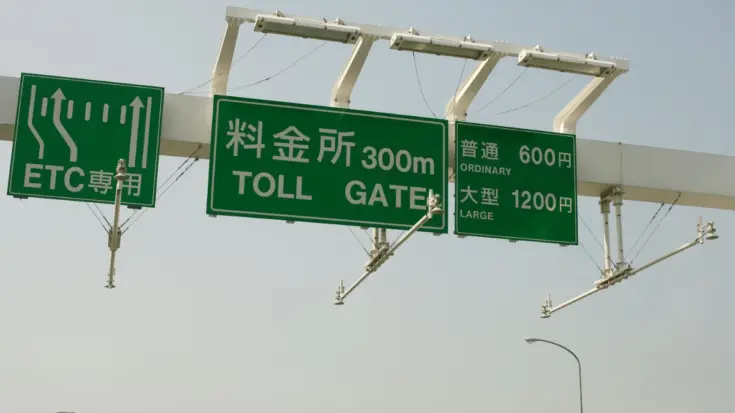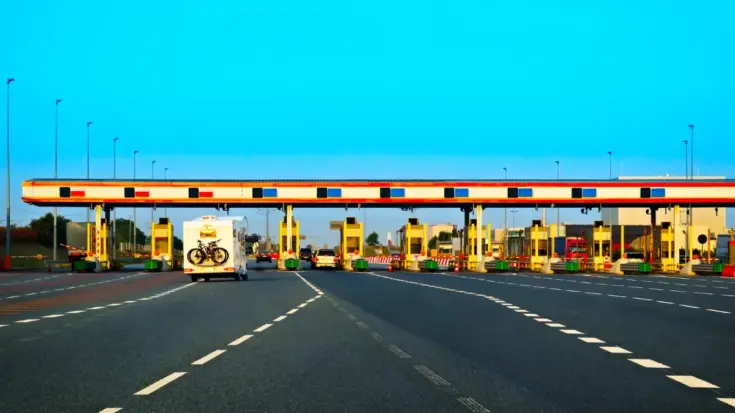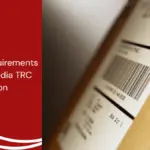Dedicated Short-Range Communication (DSRC) technology, which supports digital transportation, requires two components to function properly: the On Board Unit (OBU) and the Road Side Unit (RSU).
Road Side Units are components installed along the road as infrastructure that support DSRC to communicate with vehicles via OBU.
Are you familiar with the Road Side Unit? Read this article to the end to learn about the device that is an important part of the advancement of digital transportation.
Also Read
Table of Contents
What is a Road Side Unit?

A Road Side Unit (RSU) is an electronic device that is a component of Dedicated Short-Range Communication (DSRC) technology in support of digital transportation.
This device is installed in road infrastructure, such as traffic light poles, electronic information boards, or highway shoulders.
Using a 5.9 GHz radio frequency, the device can quickly exchange short-range data with vehicles equipped with an On-Board Unit (OBU).
The information provided by the RSU includes road information, traffic lights, accidents ahead, lane changes, and information related to slippery road conditions.
The Function of Road Side Unit
The main function of the Road Side Unit (RSU) is as an infrastructure that supports DSRC to give the information to the vehicle. The following are its functions and applications:
1. Collecting traffic data
RSU collects and records data from every passing vehicle. The data consists of statistics such as the number of passing vehicles, peak traffic hours, and types of vehicles passing through. In the long term, RSU data can be used for transportation analysis.
2. Providing traffic services
From the data collected, RSU can provide traffic services by providing traffic condition information to OBU, such as highway congestion. This allows drivers to choose the best route based on speed information and estimated travel time.
3. Providing real-time information
Using radio frequency, various traffic information provided by the RSU can be transmitted in real time with millisecond accuracy. The information provided from RSU to OBU is immediately received by drivers as a consideration in obtaining the traffic data they need.
4. Early warning detection
By providing real-time information, RSU can provide early warning detection such as collision warnings, emergency braking, sudden vehicle stops, and lane changes. This allows drivers to anticipate potential hazards.
5. Electronic payment system

In addition to providing traffic condition information, RSU can be used as an electronic payment system. This device can be used in smart parking systems and automatic toll systems. Vehicles can automatically pass through by deducting the balance from the e-wallet available on the OBU device.
Road Site Unit Regulation

The Road Side Unit (RSU) uses technologies such as Short Range Devices (SRD) that operate within a specific frequency spectrum, 5.9 GHz. In every country, any SRD-based wireless device is required to have a Type Approval Certification.
The certification ensures that the product meets government safety and quality regulations and does not interfere with other communication devices. The certification process involves technical testing, such as frequency adjustments, safety checks, and compatibility with the surrounding environment.
Once the tests are completed, products that pass are listed in a Test Result Report, which confirms that the product is safe and ready for sale. This report reassures customers that the product meets technical standards and is secure.
For companies looking to sell RSU in South East Asia, specifically Indonesia, Malaysia, Singapore, the Philippines, Thailand, Vietnam, and Cambodia, you can contact Dimulti as the leading SEA Product Compliance Specialists and Certification Services provider, available to assist with the process.


















